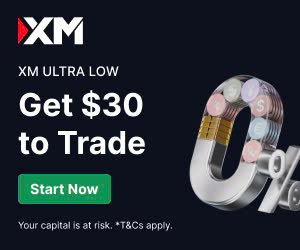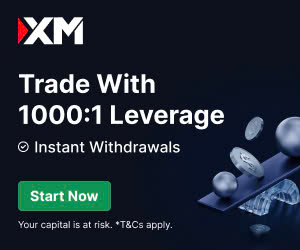
10 minute read
XM vs Hantec: A Comprehensive Comparison
The forex trading industry is highly competitive, with brokers vying to offer the best platforms, fees, and features to attract traders. Two well-known brokers, XM vs Hantec Markets, have built strong reputations in the market, but each caters to different trader needs. This article provides a detailed, comparison of XM vs Hantec Markets, covering key aspects such as regulation, account types, fees, trading platforms, and more. Whether you’re a beginner or an experienced trader, this guide will help you decide which broker suits your trading goals in 2025.

💥 Trade with XM now: Open An Account or Visit Brokers 🏆
Overview of XM vs Hantec Markets
XM: A Global Leader in Forex and CFD Trading
Founded in 2009, XM has grown into one of the most recognized forex and CFD brokers worldwide. Headquartered in Cyprus, XM operates under multiple regulatory bodies, including CySEC (Cyprus), ASIC (Australia), and IFSC (Belize). With a client base spanning over 190 countries, XM is known for its low entry barriers, user-friendly platforms, and extensive educational resources.
Hantec Markets: A Trusted Name with a Long History
Established in 1990, Hantec Markets is part of the Hantec Group, a financial services provider with a strong presence in Asia, Europe, and beyond. While Hantec began offering forex trading services in 2009, its decades of experience in financial markets add credibility. Regulated by top-tier authorities like the FCA (UK) and ASIC (Australia), Hantec Markets emphasizes transparency and client security.
Regulation and Trustworthiness
XM’s Regulatory Framework
XM operates under stringent regulations, ensuring a high level of trust and security for its clients. Its licenses include:
· Cyprus Securities and Exchange Commission (CySEC): Ensures compliance with EU financial regulations.
· Australian Securities and Investments Commission (ASIC): A top-tier regulator known for robust oversight.
· International Financial Services Commission (IFSC): Provides additional flexibility for non-EU clients.
XM’s regulatory compliance includes segregated client funds, negative balance protection, and participation in investor compensation schemes in certain jurisdictions. However, some traders note that the IFSC license is less stringent than CySEC or ASIC, which may be a consideration for high-net-worth clients.
Hantec Markets’ Regulatory Standing
Hantec Markets also boasts strong regulatory credentials, with licenses from:
· Financial Conduct Authority (FCA): One of the most respected regulators globally, ensuring strict compliance and client fund protection.
· Australian Securities and Investments Commission (ASIC): Aligns with global standards for transparency.
· Financial Services Commission (FSC) of Mauritius and Jordan Securities Commission (JSC): Adds flexibility for international clients.
Hantec’s FCA regulation is a significant advantage, as it enforces high standards for financial conduct and client protection. Like XM, Hantec segregates client funds and offers negative balance protection, making it a reliable choice for traders prioritizing security.
Verdict: Both brokers are well-regulated, but Hantec’s FCA license gives it a slight edge for traders seeking the highest regulatory standards. XM’s broader regulatory coverage, however, appeals to a global audience.
Account Types and Minimum Deposits
XM Account Options
XM is renowned for its accessibility, offering account types tailored to different trader profiles:
· Micro Account: Ideal for beginners, with a minimum deposit of $5 and micro-lot trading (0.01 lots).
· Standard Account: Suited for intermediate traders, also requiring a $5 minimum deposit.
· XM Zero Account: Designed for advanced traders, with a $100 minimum deposit, tighter spreads (from 0.0 pips), and a commission of $3.50 per lot.
· Islamic Account: Swap-free accounts for Muslim traders, available across all account types.
XM’s low minimum deposit of $5 for Micro and Standard accounts makes it one of the most beginner-friendly brokers in the industry.
Hantec Markets Account Options
Hantec Markets offers fewer account types, focusing on simplicity:
· Cent Account: Geared toward beginners, with a minimum deposit of $10 and smaller trade sizes to reduce risk.
· Standard Account: Suitable for experienced traders, also requiring a $10 minimum deposit, offering access to Hantec’s full range of features.
· Professional Account: Requires a $1,000 minimum deposit and is tailored for high-volume traders with bespoke conditions.
Hantec’s demo account is available but limited to 30 days, which may not be sufficient for traders needing extended practice. However, extensions can be requested.
Verdict: XM’s lower minimum deposit ($5 vs. $10) and diverse account options make it more accessible for beginners. Hantec’s Cent and Standard accounts are competitive, but its higher minimum for professional accounts may deter some traders.
Fees and Spreads
XM’s Fee Structure
XM’s fee structure varies by account type:
· Micro and Standard Accounts: No commission, with average spreads starting at 1.0 pips for major pairs like EUR/USD.
· XM Zero Account: Commission-based ($3.50 per lot), with ultra-low spreads starting at 0.0 pips.
· Non-Trading Fees: No withdrawal fees for most methods, but a $15 fee applies for bank withdrawals under $200. An inactivity fee is charged after 90 days of no trading.
XM’s spreads are competitive but not the tightest in the industry, particularly for non-Zero accounts. Its transparent fee structure, however, is a plus for traders.
Hantec Markets’ Fee Structure
Hantec Markets uses a fixed-spread model, which can be advantageous in volatile markets:
· Cent and Standard Accounts: No commission, with spreads starting at 0.0 pips for EUR/USD (as low as 0.2 pips in some cases).
· Professional Account: Custom spreads and conditions, often tighter but dependent on trading volume.
· Non-Trading Fees: Hantec does not charge withdrawal fees, and there are no inactivity fees mentioned in recent reviews.
Hantec’s fixed spreads provide cost predictability, but they may be wider during low-volatility periods compared to variable-spread brokers.
Verdict: Hantec’s zero-commission model and tight fixed spreads are appealing for cost-conscious traders. XM’s Zero Account offers lower spreads for advanced traders, but its commission structure may increase costs.

💥 Trade with XM now: Open An Account or Visit Brokers 🏆
Trading Platforms
XM’s Trading Platforms
XM supports the industry-standard MetaTrader 4 (MT4) and MetaTrader 5 (MT5), available on desktop, web, and mobile devices. Key features include:
· Advanced charting with 31+ tools and 51 indicators.
· Support for Expert Advisors (EAs) for automated trading.
· One-click trading and customizable interfaces.
· Mobile apps compatible with iOS, Android, and Windows devices.
XM’s platforms are user-friendly, with seamless integration across devices. However, it does not offer proprietary platforms, which may limit options for traders seeking unique features.
Hantec Markets’ Trading Platforms
Hantec also relies on MT4 and MT5, with similar features to XM:
· Robust charting with 25+ tools and 79 indicators.
· Support for EAs and one-click trading.
· Mobile apps for iOS and Android, though the Currenex platform (desktop-only) is available for ECN accounts.
A notable drawback is Hantec’s 30-day limit on MT4/MT5 access for demo accounts, which may inconvenience traders testing strategies. The Currenex platform offers advanced features but is less accessible for retail traders.
Verdict: Both brokers offer reliable MT4 and MT5 platforms, but XM’s unlimited demo account access gives it an edge for beginners. Hantec’s Currenex platform is a niche advantage for ECN traders.
Tradable Instruments
XM’s Asset Offerings
XM provides a diverse range of instruments, including:
· Forex: 57 currency pairs, covering majors, minors, and exotics.
· CFDs: Stocks, indices, commodities, precious metals, and energies.
· Cryptocurrencies: Available for clients under XM Global Limited.
While XM’s forex and CFD offerings are robust, its crypto selection is limited compared to specialized brokers, and real stocks are only available under its IFSC-regulated entity.
Hantec Markets’ Asset Offerings
Hantec’s instrument range is slightly narrower:
· Forex: 33–42 currency pairs, depending on the jurisdiction.
· CFDs: Stocks, indices, commodities, precious metals, and cryptocurrencies.
· Spread Betting: Available in certain regions, adding flexibility for tax-free trading.
Hantec’s crypto and stock CFD offerings are competitive but lag behind brokers like RoboForex, which offer thousands of stock CFDs.
Verdict: XM offers a broader range of currency pairs and CFDs, making it more versatile for diversified trading. Hantec’s spread betting option is a unique feature but limited by jurisdiction.
Leverage and Risk Management
XM’s Leverage
XM offers flexible leverage up to 1:1000, depending on the account type and regulatory jurisdiction. EU clients under CySEC are capped at 1:30 due to ESMA regulations. XM provides tools like stop-loss orders and negative balance protection but does not allow manual leverage adjustments, which may be a drawback for risk-averse traders.
Hantec Markets’ Leverage
Hantec offers leverage up to 1:500, with EU clients also limited to 1:30 under FCA rules. Hantec supports stop-loss and limit orders, enhancing risk management. Its fixed-spread model can also help traders predict costs during volatile market conditions.
Verdict: XM’s higher leverage (1:1000) appeals to aggressive traders, while Hantec’s more conservative leverage (1:500) and fixed spreads suit risk-conscious traders.
Customer Support and Education
XM’s Support and Resources
XM provides 24/5 customer support via live chat, email, and phone, available in multiple languages. Its educational offerings are extensive, including:
· Webinars and video tutorials.
· Daily market analysis and trading signals.
· A demo account with unlimited access.
XM’s focus on education makes it an excellent choice for beginners.
Hantec Markets’ Support and Resources
Hantec offers 24/5 support through live chat, email, and phone, with mixed reviews on response times, particularly for non-English speakers. Its educational resources are limited compared to XM, focusing primarily on platform guides and basic market insights. The 30-day demo account restriction further limits learning opportunities.
Verdict: XM excels in customer support and education, making it ideal for new traders. Hantec’s support is reliable but less comprehensive.
Pros and Cons
XM
Pros:
· Low minimum deposit ($5).
· Wide range of account types and instruments.
· Extensive educational resources and unlimited demo account.
· Competitive spreads on Zero Account.
Cons:
· Average spreads on Micro and Standard accounts.
· Inactivity fees after 90 days.
· Limited cryptocurrency offerings.
Hantec Markets
Pros:
· Tight fixed spreads with no commission on Cent and Standard accounts.
· Strong FCA regulation.
· Fast withdrawal processing.
· Spread betting for eligible clients.
Cons:
· Higher minimum deposit for professional accounts ($1,000).
· Limited demo account access (30 days).
· Fewer currency pairs and educational resources.
Which Broker Should You Choose?
Choosing between XM vs Hantec Markets depends on your trading style, experience level, and priorities:
· Choose XM if: You’re a beginner or intermediate trader looking for a low entry point ($5 minimum deposit), extensive educational resources, and a wide range of currency pairs. XM’s unlimited demo account and user-friendly platforms are ideal for learning and testing strategies.
· Choose Hantec Markets if: You prioritize tight fixed spreads, strong FCA regulation, and cost predictability. Hantec is suitable for traders who value transparency and are comfortable with a slightly higher minimum deposit ($10).
Both brokers are reputable and cater to different needs. XM’s accessibility and educational focus make it a top choice for new traders, while Hantec’s fixed spreads and regulatory strength appeal to experienced traders seeking stability.
Conclusion
In the XM vs. Hantec Markets comparison, both brokers offer compelling features for forex and CFD trading in 2025. XM stands out for its low minimum deposit, diverse account types, and robust educational resources, making it a go-to option for beginners. Hantec Markets, with its fixed spreads, FCA regulation, and fast withdrawals, is a strong contender for traders prioritizing cost predictability and security.
Before deciding, test both brokers’ demo accounts to evaluate their platforms and trading conditions. Always consider your trading goals, risk tolerance, and jurisdictional regulations when selecting a broker.
💥 Note: To enjoy the benefits of the partner code, such as trading fee rebates, you need to register with XM through this link: Open An Account or Visit Brokers 🏆
Read more:




